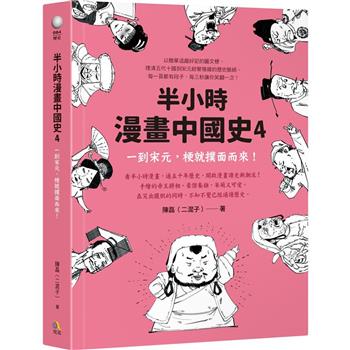| FindBook |
有 1 項符合
Foundations of Economics (PNIE) 6/e的圖書 |
| 圖書館借閱 |
| 國家圖書館 | 全國圖書書目資訊網 | 國立公共資訊圖書館 | 電子書服務平台 | MetaCat 跨館整合查詢 |
| 臺北市立圖書館 | 新北市立圖書館 | 基隆市公共圖書館 | 桃園市立圖書館 | 新竹縣公共圖書館 |
| 苗栗縣立圖書館 | 臺中市立圖書館 | 彰化縣公共圖書館 | 南投縣文化局 | 雲林縣公共圖書館 |
| 嘉義縣圖書館 | 臺南市立圖書館 | 高雄市立圖書館 | 屏東縣公共圖書館 | 宜蘭縣公共圖書館 |
| 花蓮縣文化局 | 臺東縣文化處 |
|
|
- 圖書簡介
•Focus on core concepts: Each chapter focuses students’ attention on 3-5 key concepts so students understand how the various details fit back into the larger picture.
•Learn by doing: Foundations of Economics and its accompanying print and online resources are structured to encourage learning by doing. Within the text, a Checklist-Checkpoint system provides a practice-oriented framework:
•Checklists begin each chapter to preview the 3-5 key ideas students need to know, and the chapter is broken into discrete sections devoted to each of those ideas.
•Checkpoints follow each of those sections and provide a full page of practice. Each Checkpoint includes a practice problem with a guided solution and a parallel exercise for the student to try.
•Chapter Checkpoints end each chapter and include a summary of key points and key terms, as well as additional practice opportunities consisting of problems and exercises, news analysis questions, critical thinking questions, and Web exercises that require students to find data and information online to answer discussion questions.
•In-text problems, assignable online in MyEconLab: Bade and Parkin are the only economics authors who write their own content in an online assessment platform. For Foundations of Economics, here are a few examples of what they wrote for Pearson’s online assessment and tutorial system, MyEconLab:
•Checkpoints in the text are available for students to practice online in MyEconLab. Checkpoint problems appear in study mode where students can work them using tutorial learning aids as needed. Checkpoint exercises are available in a self-test mode so students are encouraged to work them independently before getting feedback.
•News Analysis Questions are found in the end-of-chapter material and online in MyEconLab. These questions ask students to interpret a news story then answer related questions that apply economic concepts.
•End-of-chapter problems and exercises are also developed as auto-graded questions in MyEconLab. Instructors can assign end-of-chapter problems online–even problems with graphing, fill-in-the-blank, and numerical entries.
•Economics in the News is updated every day during the school year by the authors themselves. Each entry provides a summary of the news, a link to the complete story, and discussion questions.
•Additional learning tools include audio-narrated animations, interactive graphs, customized feedback, and guided solutions.
•Instructors can encourage students to practice—without needing to grade by hand—by using MyEconLab.
•Professors can choose how much time—or how little—they want to spend setting up the course. View a sample of how instructors use MyEconLab here.
•Computer-graded graphing exercises help students become more comfortable and proficient working with economic graphs and models.
•Online homework, quizzes, and tests are easy to assign, allowing instructors to build assessments using a mix of MyEconLab-specific problems, Test Bank questions, and questions written by the instructor using the Econ Exercise Builder.
•A robust gradebook tracks students’ performance on online homework, quizzes, tests, and problems worked in the Study Plan.
•Supplements are reliable and easy to use because they align with the same Checklist-Checkpoint structure found in the text. A complete suite of instructor supplements is available, including an Instructor’s Manual, a new Solutions Manual, three Test Banks, PowerPoint® lecture slides, and an Instructor’s Resource CD-ROM.
•Test Bank questions include graphing questions and integrative questions in each chapter.
•All components of the supplements are organized by Checkpoint topic so students can move easily through the textbook, MyEconLab, and the Study Guide, and instructors can navigate among the textbook, MyEconLab, the PowerPoint lecture slides, the Instructor’s Manual, and the Test Banks.
•Three separate Test Banks are available, with more than 12,000 multiple-choice, numerical, fill-in-the-blank, short-answer, and essay questions, plus integrative questions that build on material from more than one Checkpoint and more than one chapter.
•The Test Bank authors also wrote questions for the Study Guide to ensure consistency.
•News analysis and data-driven problems at the end of each chapter include:
•News-based end-of-chapter questions that give news summaries and ask students to apply economics to the news.
•Web exercises that ask students to seek out real data on the web and use it to answer questions.
•Modern micro and macro topics are presented at an accessible level that uses contemporary examples to tie theory into the real world. - 作者簡介
Robin Bade
Michael Parkin - University of Western Ontario - 序
New To This Edition
Offer the latest content: New Features.
•Simplified chapter openers grab student attention and provide instant focus for the chapter. Each chapter opens with a question about a central issue that the chapter addresses and is illustrated with a carefully selected photograph.
•An Eye On box addresses and discusses the chapter-opener and an end-of-chapter problem. This is also available in the MyEconLab Homework and Test Manager, making the issue available for assignment with automatic grading. This feature:
◦Enables students to get the point of the chapter quickly.
◦Ties the chapter together.
◦Helps instructors focus on a core issue in class and for practice.
•The Chapter Checkpoints (the last three pages of each chapter) have been thoroughly revised.
◦The first page contains problems and applications for students to work on, which are replicated in the MyEconLab Study Plan.
◦The second page contains problems and applications for instructors to assign as a homework, quiz, or test. Many of these problems and applications are new to the sixth edition and include mini-case studies from recent news stories.
◦The third page contains a short multiple-choice quiz. This quiz, also available in MyEconLab for student practice, hits the high points of the chapter and enables students to test themselves on the types of questions they are likely to encounter on tests and exams.
The Checkpoints at the end of each major section of a chapter have been reorganized to separate practice with basic analysis and “In the News” applications. Worked solutions are provided for both types of questions.
Major Content Changes in Introductory Chapters
Chapter 1 has been reworked in order to strengthen the explanation and illustration of the economic way of thinking by placing the student center stage and focusing on the decision to remain in school or get a full-time job. The goal is to engage students from the outset of the course, grabbing their attention and showing them the relevance of economics and its place in everyday life. The explanation of the scientific method in economics has also been revised and improved.
Chapter 3 has a more gradual and fully illustrated explanation of the mutual gains from trade arising from comparative advantage and a new Eye On box on the power of specialization and trade through the classic story of the production of the pencil.
Major Content Changes in Micro Chapters
The following are some of the motivating questions and features of Eye On boxes and end-of chapter problems in the sixteen micro chapters:
What do you do when the price of gasoline rises?
Should price gouging be illegal?
Can the President repeal the laws of supply and demand?
Does Congress decide who pays the taxes?
Who wins and who loses from globalization?
How can we limit climate change?
Should America build a high-speed rail network like Europe’s?
How do you avoid buying a lemon? How much would you pay for a song?
Which store has the lower costs: Wal-Mart or 7-Eleven?
Why did GM fail?
Are Microsoft’s prices too high?
Which cell phone?
Is two too few?
Why is a coach worth $6 million?
Who are the rich and the poor?
Reorganization of chapters dealing with externalties, public goods, and common resources:
•Chapter 10 explains all types of externalities. It explains negative externalities, illustrated with pollution, and positive externalities, illustrated with knowledge (education and research).
•Chapter 11 covers public goods and common resources and uses Obama’s wish to create a high-speed rail network similar to Europe’s to illustrate the efficient and inefficient provision of a public good. The analysis of common resources treats the tragedy of the commons as a type of externality problem.
New Chapter 12: Markets with Private Information explains the lemons problem and its solutions, and the problems that arise from asymmetric information in insurance and health-care markets. A section of this new chapter is devoted to health care and the challenges that arise from asymmetric information, missing insurance markets, and public health externalities. The U.S. health-care market is compared with those in other countries and Laurence Kotlikoff’s voucher-based “Medicare Part C for All” is described.
Major Content Changes in Macro Chapters
These chapters cover the macroeconomic events and debates triggered by the 2007 global financial crisis, the 2008-2009 recession, the stubbornly slow recovery, and the headwinds of the European debt problems of 2011. Policy features appear at every possible opportunity throughout these chapters. The following are the motivating questions and features of Eye On boxes and end-of-chapter problems in the macro chapters:
How do we track our economy’s booms and busts?
How long does it take to find a job?
Which movie really was the biggest box office hit?
Why do Americans earn more and produce more than Europeans?
Why are some nations rich and others poor?
What created the global financial crisis?
How does the Fed create money and regulate its quantity?
What causes inflation?
Why did the U.S. economy go into recession in 2008?
How big is the government expenditure multiplier?
Can we have low unemployment and low inflation?
Can fiscal stimulus end recession?
Did the Fed save us from another Great Depression?
Why has our dollar been sinking?
Chapter 25: Economic Growth has been thoroughly revised in the section on labor productivity growth. It contains the explanation of the effects on labor productivity around the productivity curve—the relationship between real GDP per hour of labor and capital per hour of labor. This change makes the treatment of this topic more mainstream and less reliant on the preceding chapter and potential GDP. It also makes the contrast between the effects of capital accumulation and technological change more vivid.
Chapter 27: The Monetary System now includes a description of QE2 and “operation twist.”
Chapter 29: Aggregate Supply and Aggregate Demand has been revised and contains a more graphic application section that shows how the AS-AD model explains economic growth, inflation, and the business cycle. This chapter also has a new explanation of “demand-pull” and “cost-push” inflation cycles. These applications and exercises using the AS-AD model provide additional practice in working with the model and show its relevance to the U.S. economy today.
Chapter 31: The Short-Run Policy Tradeoff includes an explanation of the danger of trying to lower the unemployment rate by stimulating aggregate demand.
Chapter 32: Fiscal Policy offers a new section on the Social Security and Medicare time-bomb and the challenge of addressing it. The chapter also now has an explanation of the distinction between a structural deficit and a cyclical deficit. - 目次
PART 1: INTRODUCTION
Chapter 1. Getting Started
Chapter 2. The U.S. and Global Economies
Chapter 3. The Economic Problem
Chapter 4. Demand and Supply
PART 2: A CLOSER LOOK AT MARKETS
Chapter 5. Elasticities of Demand and Supply
Chapter 6. Efficiency and Fairness of Markets
PART 3: HOW GOVERNMENTS INFLUENCE THE ECONOMY
Chapter 7. Government Actions in Markets
Chapter 8. Taxes
Chapter 9. Global Markets in Action
PART 4: MARKET FAILURE AND ITS SOLUTIONS
Chapter 10. Externalities
Chapter 11. Public Goods and Common Resources
Chapter 12. Markets with Private Information
PART 5: A CLOSER LOOK AT DECISION MAKERS
Chapter 13. Consumer Choice and Demand
Chapter 14. Production and Cost
PART 6: PRICES, PROFITS, AND INDUSTRY PERFORMANCE
Chapter 15. Perfect Competition
Chapter 16. Monopoly
Chapter 17. Monopolistic Competition
Chapter 18. Oligopoly
PART 7: INCOMES AND INEQUALITY
Chapter 19. Markets for Factors of Production
Chapter 20. Economic Inequality
PART 8: MONITORING THE MACROECONOMY
Chapter 21. GDP: A Measure of Total Production and Income
Chapter 22. Jobs and Unemployment
Chapter 23. The CPI and the Cost of Living
PART 9: THE REAL ECONOMY
Chapter 24. Potential GDP and the Natural Unemployment Rate
Chapter 25. Economic Growth
Chapter 26. Finance, Saving, and Investment
PART 10: THE MONEY ECONOMY
Chapter 27. The Monetary System
Chapter 28. Money, Interest, and Inflation
PART 11: ECONOMIC FLUCTUATIONS
Chapter 29. Aggregate Supply and Aggregate Demand
Chapter 30. Aggregate Expenditure Multiplier
Chapter 31. The Short-Run Policy Tradeoff
PART 12: MACROECONOMIC POLICY
Chapter 32. Fiscal Policy
Chapter 33. International Finance
Chapter 34. Monetary Policy
70個馬上套用的賺錢模式:半夜賣榻榻米、貴五倍的衛生紙、不怕你暴雷的試閱……這些獲利模式怎麼想出來的?現役行銷大師破天荒給你思考加速器。
基恩斯的再現性工作技術:平均年薪超過兩千萬日圓的人怎麼工作?基恩斯員工不靠運氣而是建立模式、複製成果,成為再現性人才。
攀高、續抱、快逃—K線之道:股票要漲,不能純靠題材,更需要資金拉抬。K線比財報早知道,賺到70%漲幅。
50張圖秒懂勞動權益:你在職場走跳,從求職到離職絕對不挨刀!
別讓主力賺走你的錢:115張技術圖表,買在最低風險,決定超級獲利(熱銷再版)
急性子的不累工作法:回郵件超快、喜歡多工進行、不喜歡等人更不讓人等,事事求快當然好,但如何不累不氣還兼顧品質?
當你沒有新鮮的肝-不當主管你會更累:怕累、怕煩、不想扛責?35年資歷的人資主管分享,為何你在45歲前,該逼自己當個清、濁二刀流主管!
2024年臺灣IT Spending 調查:金融業
犬性思維:讓銷售變簡單
|












